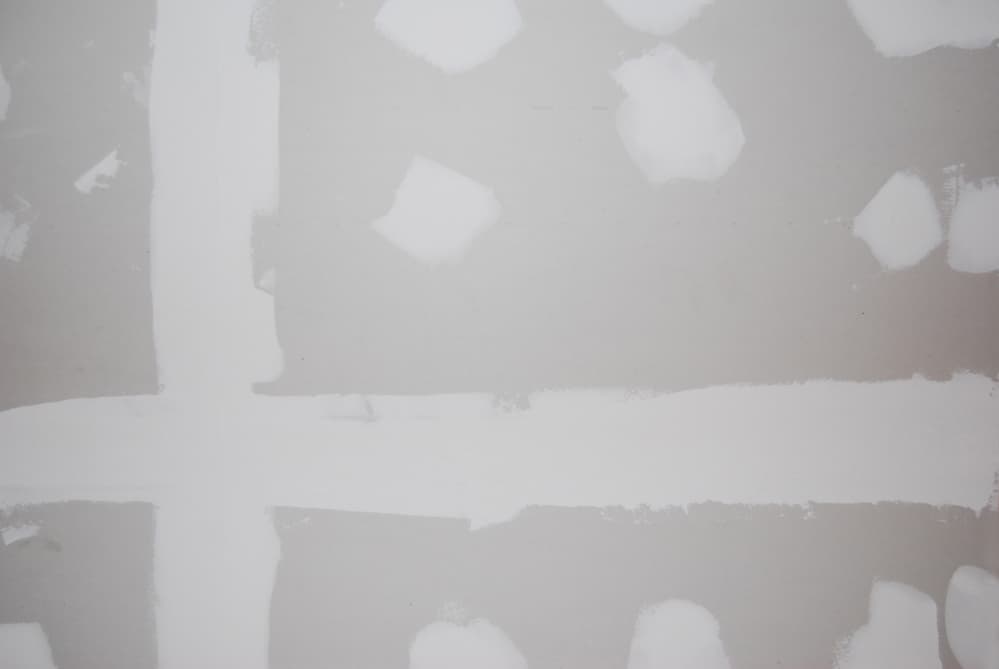A leaky pipe or roof can wreak havoc on your home, especially the drywall. It can cause the drywall to buckle and warp, and it can also create a breeding ground for mold and mildew.
As soon as you notice having water-damaged drywall, you need to get it fixed as soon as possible. But first, get to know more about drywall and why they are prone to water damage.

What Is a Drywall?
A drywall is a construction material used to make walls and ceilings. It consists of a paper-like sheet of material, made from gypsum
A drywall is a construction material used in building walls and ceilings. It is made out of gypsum plaster sandwiched between two sheets of paper. It is often called sheetrock, wallboard, or plasterboard.
How does drywall work? The gypsum plaster in drywall is hydrated calcium sulfate. When water is added to this plaster, it forms a putty-like material that can be spread out and molded into shapes.
When the putty-like material dries, it hardens into a rock-like substance. The two sheets of paper help to keep the plaster in place while it dries. Once it is dry, the drywall can be cut, drilled, and sanded just like wood.
What Are the Benefits and Downsides of Using Drywall?
Drywalls are much easier to work with than other construction materials such as bricks or concrete. They are also much lighter, so they can be easily carried and installed by a single person.
Drywalls are also fire-resistant and soundproof, which makes them ideal for use in homes and offices.
The main disadvantage of drywalls is that they are not as strong as other construction materials. They can be easily damaged by water or impact, so they must be carefully protected during construction and renovation projects.
Why Water Can Get into Drywall
Water can get into drywall for a number of reasons. One common reason is when the drywall gets wet from a leaky roof or a plumbing problem. Water can also get into the drywall when it is being installed. The seams between the panels are not always perfect.
Once the water gets into the drywall, it can cause a number of problems:
- The water can damage the plaster, causing the paper to swell and break down. It can lead to the formation of mold and other allergens.
- The water can also cause the drywall to sag and eventually collapse.
How to Prevent Water Damage to Drywall
The best way to prevent water damage to drywall is to make sure that the wall is properly sealed before it is installed. The seams between the panels should be caulked or taped. The wall should also be covered with a waterproof barrier such as plastic sheeting.
If you are already experiencing water damage to your drywall, take action immediately. Remove any wet materials such as carpet or furniture. Use fans and dehumidifiers to dry out the area. Call a professional to repair the damage.
How to Fix Water-Damaged Drywall
Dilly-dallying on repairing water-damaged drywall leads to many negative consequences. They can endanger human lives, bring down the value of the property, and cost more to fix later.
The question is, how do you go about fixing water-damaged drywall?
1. Find the Source of the Leak or Water Damage
Repairing water-damaged drywall without knowing the reason why the problem happened in the first place is a Band-Aid solution. The issue will only keep on coming back, draining your bank account and testing your patience.
The first step is to find the source of the leak or water damage. This could be a roof leak, plumbing leak, or seepage from outside. If you struggle to find it, bring in the professionals. They have the expertise, knowledge, and tools to trace the cause.
2. Assess the Severity of the Water Damage
If the water damage is minor, you may be able to repair it yourself. Start by sanding down the area to remove any mold or mildew. Then, apply a primer and paint to the area.
For more serious water damage, you will need to replace the affected drywall panels. Cut out the damaged section of drywall and then measure and cut a new piece to fit in its place. Attach the new piece of drywall using screws or nails. Then, tape and mud the seams. Sand and paint the area when dry.
Depending on how extensive the problem is, it can take a few days or even weeks to fix the drywall. During repairs, the area may be sealed off to prevent mold and mildew from settling into the wall or avoid potential injuries.
If the affected drywall happens to be in the bedroom, the occupant may have to move to another room. Otherwise, you can consider sleeping in another property, such as a hotel or an Airbnb, while the repair is ongoing.
3. Prevent Future Water Damage
Once you have repaired the water damage, take steps to prevent it from happening again. This could involve fixing the roof, repairing leaks in the plumbing, or redirecting drainage away from the building.
You may also need to install a sump pump to remove any water that does seep in. Another option is to waterproof the basement or crawlspace. These are all major projects that require the help of a professional.
How to Find the Best Team to Repair the Water-Damaged Drywall
It is not advisable to just pick any contractor you find when repairing water-damaged drywall. Choose a company with experience in repairing this type of damage.
Here are some tips to find one:
- Get Referrals: The best way to find a contractor is by word of mouth or referral. Ask your family, friends, or colleagues if they have any recommendations.
- Check Reviews: A quick online search will give you an idea of the quality of work a contractor can provide. Be sure to read reviews from past clients.
- Ask for Quotes: Get a few quotes from different contractors before making a decision. This will help you compare prices and services offered.
- Know Their Qualifications: Ask the contractor for proof of insurance and licensing. This will ensure that you are dealing with a qualified professional.
- Schedule a Home Inspection: If the water damage is extensive, it is a good idea to have a home inspector take a look at the property. This will help you get an estimate of the repair costs.
- Know Their Other Services: Some contractors may offer other services such as mold removal or remediation. If you need these services, it is helpful to know if the team can provide them.
Water damage to drywall is a serious problem that should be fixed as soon as possible. By taking action immediately, you can minimize the damage and save money in the long run. For more information, contact a professional contractor.

